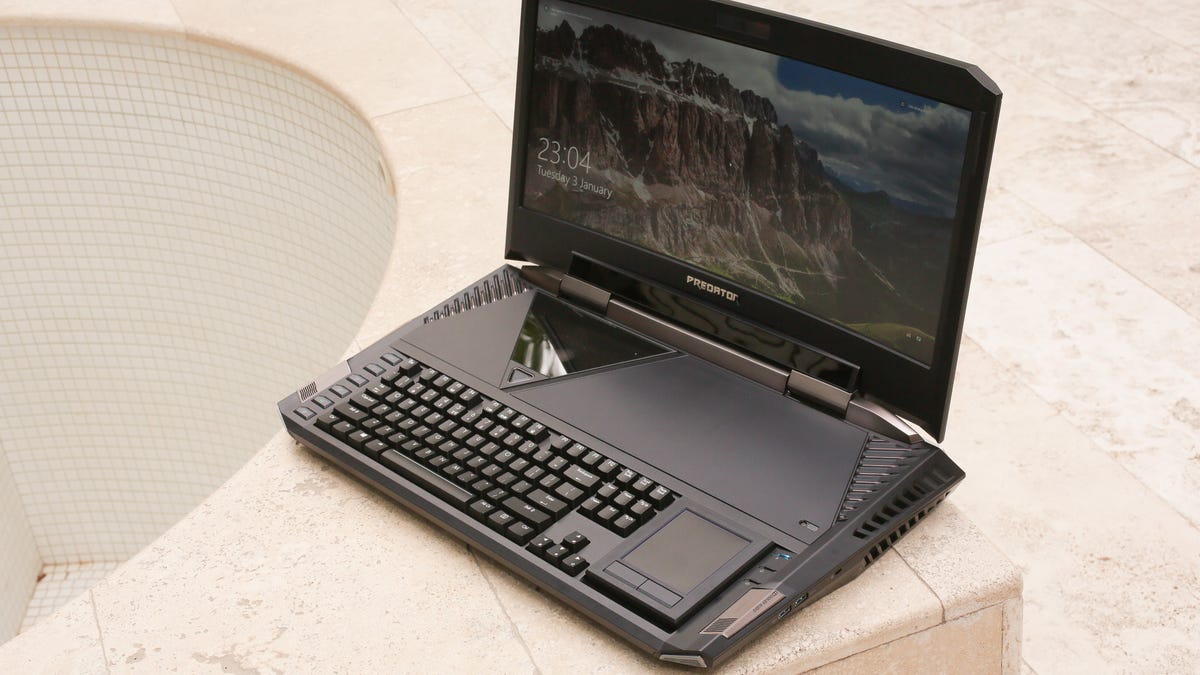Gaming laptops get an extra life at CES 2017
New Nvidia and Intel tech push PC makers to make better laptops for gaming and VR.

Gaming laptops were once the Rodney Dangerfield of computers -- they got no respect. Many were much more expensive than comparable desktop gaming rigs, despite having worse performance and less flexibility. Worse, many were laptops in name only, with back-breakingly big bodies, and some of the worst design elements ever pulled from the adolescent sci-fi fantasy look book.
Over the past few years, we've seen a steady march of improvement, to the point where serious gamers no longer look down on laptops as automatically second-class gaming machines. This year, at CES 2017, we've seen the next step in the evolution, with a lot of that progress towards thinner, nicer-looking gaming laptops with better performance trickling down to some systems at pretty amazing prices.
The Dell Inspiron 15 7000
One of Nvidia's big announcements at CES 2017 was the latest addition to the GeForce graphics card line, with the mainstream GeForce 1050 and 1050Ti GPUs. Of course, the 1050 has been spoken about pretty freely for months, so it's far from the first time we've been hearing about these, but now we have the first official lineup of GeForce 1050 laptops.
Dell leads the way, in my early impression, with the Inspiron 15 7000. It's got a little more design edge than standard Inspiron laptops, plus new seventh-gen Intel CPUs and the new Nvidia GeForce 1050 GPU, all for just $799 (£645 or AU$1,100 converted). I hear a version with the better GeForce 1050Ti GPU will only run $100 more.
The Samsung Odyssey.
Acer has a very similar config, the Predator VX 15, for the same $799, and the Lenovo Legion Y520 and Samsung Odyssey 15 will be in roughly the same price and performance zones. These are generally just shy of the specs needed for VR , but upgraded systems with the GeForce 1050Ti may work for some VR games and apps.
If some of those brand names sound new, that's because they are. This year, Lenovo introduced the new Legion gaming brand -- yes, named after ancient Roman Legions -- and Samung named its first-ever dedicated gaming line Odyssey. With HP's Omen line and Acer's Predator line, you've got quite a collection of epic-sounding gaming machines to choose from.
The Lenovo Legion.
Of course, you can't keep all the PC gaming talk at CES restricted to under-$1,000 systems. Prototypes and moonshots are what make the show fun to cover. This year, we finally got hands on with the Acer Predator 21X, a massive $9,000 gaming laptop with a 21:9 aspect ratio curved display. Just as impractical, but still fun, is the Project Valerie prototype from Razer, which has two extra 17-inch displays hidden behind its main screen, making for the world's first triple-screen gaming laptop.
The Razer Project Valerie prototype.
And finally, if either one giant wide screen or a triple-screen combo isn't enough for you, one other cool concept piece we saw was also from Razer . Project Ariana is an immersive wide-angle second-screen projector, which throws gaming content on the very walls around you, from an expanded view to weather effects to color-coordinated lights, all while the game is still running on your main display.

